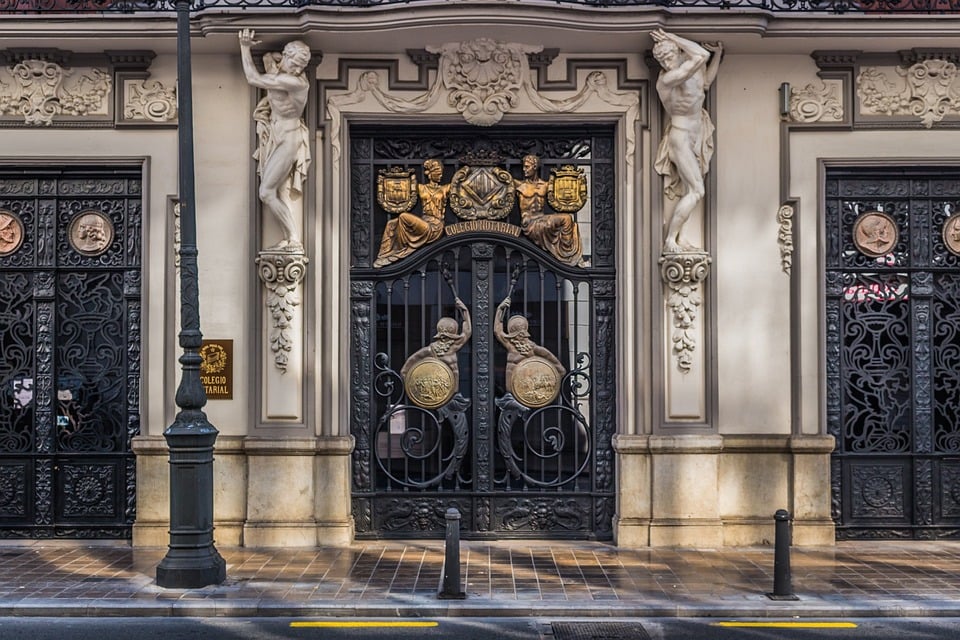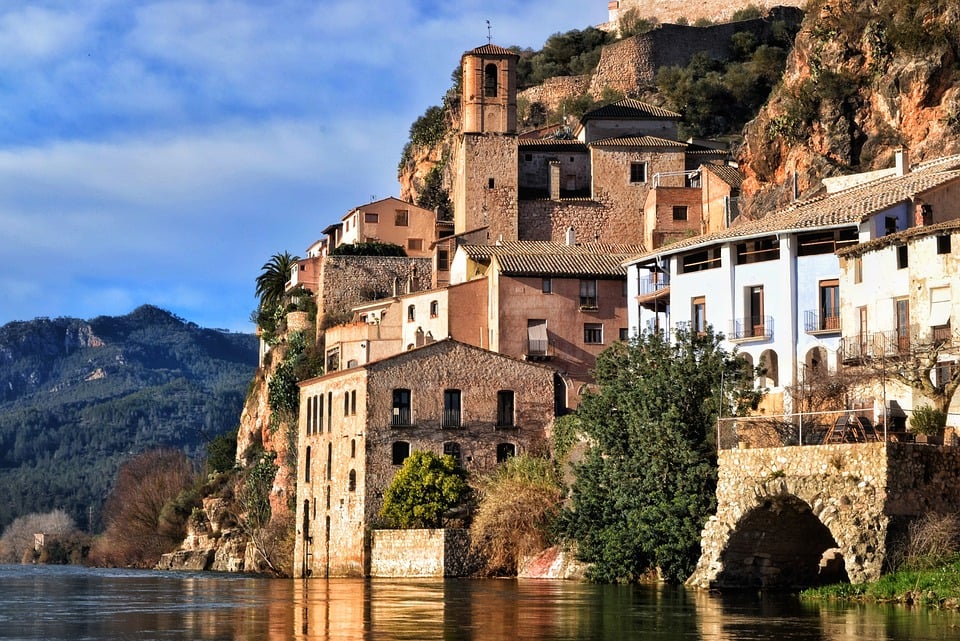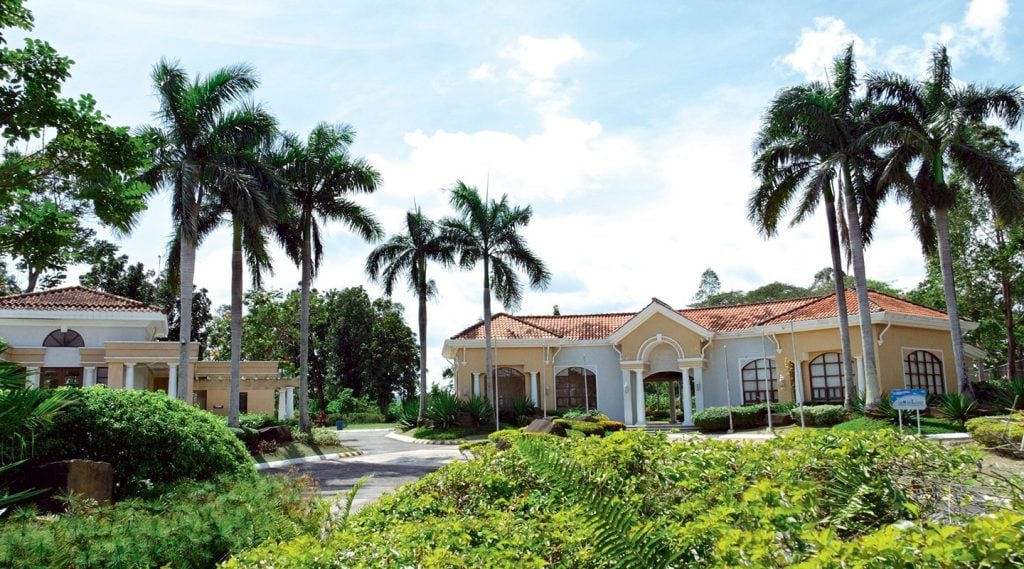BLOGS
The Growing Popularity of Spanish Architecture in the Luxurious Real Estate Sector
Spanish inspired architecture has been popular for centuries and has experienced several periods of heightened interest and influence throughout history.
Islamic architecture was a major influence on Spanish style during the eight centuries that Muslims ruled Spain.
The incorporation of geometric motifs, arches, and ornamental tilework are all influenced by this style.
There are many examples of classical Roman architecture in Spain due to the empire’s long and influential rule there. Columns, arches, and symmetrical layouts are all indicative of this.
During the Middle Ages, Gothic architecture had a major impact on Spanish style.
The use of slender, pointed arches, ribbed vaults, and ornate stonework are all telltale signs of this influence at work.
During the 16th century, Renaissance ideals of symmetry, proportion, and classical order had a profound effect on Spanish architecture.
Columns, pilasters, and pediments are all examples of this.
Baroque architecture, with its emphasis on ostentatious adornment and dramatic lighting, originated in 17th-century Spain.
The utilization of big stairs and opulent fountains are all indicative of this.

As a whole, Spanish architecture is distinguished by a synthesis of styles that reflect the country’s rich and varied past.
Spanish architecture is a unique and interesting blend of styles that has caught the imaginations of builders and designers all over the world, from the exquisite tilework of Islamic architecture to the majesty of Baroque design.
When did the popularity for Spanish architecture begin?
The Islamic period in Spain, which began in the 8th century and lasted until the late 15th century, was one of the earliest periods of prominence for Spanish architecture.
Particularly in the southern region of Andalusia, Islamic architecture had a profound impact on Spanish design during this time.
In the 16th century, when Spain underwent a cultural and artistic renaissance, Spanish architecture had another period of great success.
During this time, many Spanish architects looked to the works of Renaissance greats like Michelangelo and Raphael for inspiration as they returned to a focus on classical order and proportion.
During the 17th century, when the Baroque style first appeared in Spain, the country’s buildings enjoyed widespread acclaim.
Large, elaborate buildings and public spaces were designed during this time period by architects and interior decorators in an effort to amaze and inspire audiences.
To this day, many architects and designers look to Spain’s rich architectural history for inspiration, ensuring the style’s continued relevance and success in the current period.
Here are some of the Factors why Spanish Architecture is prevalent nowadays:
Earthy Tones
Especially in the Mediterranean-style residences that are commonly linked with the Spanish design, earthy tones are a prominent feature.
These hues were chosen to evoke a sense of comfort and warmth, drawing inspiration from the local environment.
Terra cotta, warm yellows, deep oranges, and browns are some of the most popular earthy tones utilized in Spanish architecture.
Tiles in the kitchen and bathroom, as well as the outside walls, can all be found in these tones.
Using natural, earthy tones is a common practice in Spanish architecture since it helps to blend the building in with its surroundings.
This is especially useful in locations with stunning natural scenery, as it draws attention to the area’s best qualities.
Functional
As well as being aesthetically pleasing, earthy tones can also be functional.
Because of this, they can help save money in the long run by reducing the frequency with which they need to be cleaned and maintained.
Homes designed in the Spanish style are also well-known for their high levels of energy efficiency.
The majority of these houses are intended to make the most of natural light and ventilation, which can help cut down on monthly power bills and create a living environment that is better for residents’ health.

Aesthetic
When it comes to the overall aesthetic appeal of Spanish architecture, earthy tones play a significant role.
Indeed the style architecture by the Spaniards are beautiful and pleasing to the eyes, especially that the Philippines is a tropical country, and was a Spanish colonial before.
The warm and inviting colors of Spanish architecture can help you create a room that is attractive and functional, whether you’re searching for a lavish holiday house or a cozy place to live all year round.
Outdoor Spaces
The use of outdoor spaces for living is another hallmark of Spanish-style building.
The large patios, courtyards, and gardens found in many of these homes are ideal for hosting gatherings and relaxing in the sunshine.
Patios, porches, and other outdoor gathering places play a crucial role in the layout and design of a Spanish-style house.
These areas are made to feel like an extension of the home, allowing residents to enjoy the Mediterranean climate in style and comfort.
In Spanish homes, the patio or terrace is generally shaded by an arbor or pergola, making it a popular place to spend time outside.
These spaces are ideal for hosting gatherings or just spending time with loved ones, as they generally have plush furniture, dining tables, and extras like outdoor kitchens and fireplaces.
The courtyard, a common outdoor living space in Spanish architecture, is usually positioned in the home’s central core and is accessible from several different rooms.
Fountains, garden beds, and lounging places are common components of courtyard designs that aim to create a private and intimate space.
Gardens are an integral component of Spanish outdoor living areas, and are typically planned to be lush and colorful with a wide range of plants and flowers that thrive in the region’s typical Mediterranean environment.
Homeowners have several design options for these gardens, since they can be integrated into existing patios and courtyards or placed in other parts of the property.
Spanish architecture’s outdoor living spaces aim to blur the line between indoors and out, giving cozy, practical spots to take in the region’s famous sunshine and warm breezes.
Many homebuyers specifically seek out properties with Spanish architectural features.
The design’s usefulness is taken into account.
Brittany Sta. Rosa is the perfect example of how Spanish architecture can be adapted for use in tropical climates.
Spanish-style homes are best suited to arid climates, so if that’s where you live, you might want to give some thought to the landscaping of your ideal mansion.
To further safeguard your property from the weather, you can choose to install a sun-resistant exterior.
Spanish-style homes are ideal for warm climates because of their thick walls and cool, easy-to-clean tile floors.
It may take some time, but the right modern luxury home inspired by Spain is out there.
The Brittany Corporation, fortunately, has something special in store for you.

Brittany Sta Rosa is the place to go if you’ve settled on purchasing a home in the Spanish colonial design.
The Belle Reve residence is one of their Laguna luxury house and lot holdings; it is a wonderful example of Spanish design.
Brittany can pick from a wide variety of opportunities in Santa Rosa Laguna.
Within the brittle, lush forests that meld into breathtaking knot gardens, tower the sumptuous mansions, which have been painstakingly built to blend in with the natural environment.
It is the perfect place to get away from the bustle of the city and take a deep breath of relief if you are looking for a simpler, more refined way of life.
A moderate, pleasant, and soft breeze will allow you to unwind in the tranquility of your own home, away from the hustle and bustle of the city and the intrusion of tall, imposing structures and other distractions.
Suggested Read: How To Incorporate Spanish Design Elements Into Your Home
Suggested Read: Traditional Spanish Decor: Tips For Achieving A Classic Look
Suggested Read: Exquisite Craftsmanship Of Spanish Architecture
Suggested Read: Colors Of A Rustic Spanish Style
Suggested Read: Bringing The Colors Of Spain















